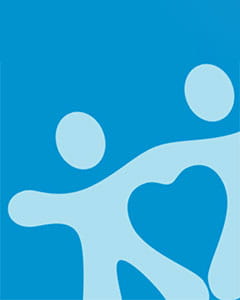When should a child return to school after a concussion?
Written by Steven Schulenborg, Resident of the Sports Medicine Program at Arnold Palmer Hospital
As common as it is to see professional and college football players leave a game due to a concussion, a recent study conducted by the Institute of Medicine and National Research Council revealed that high school football players sustain concussions nearly twice as often as college players. Football is the most common way children and adolescents sustain concussions, but concussions are frequently seen in other competitive sports as well: soccer, ice hockey, wresting, basketball, volleyball, baseball, and softball. In addition to sports, children can develop concussions from blows to the head and falls during horseplay with friends, skateboard accidents, or playing on playground equipment.
Laws govern a child’s return to the field, but what about the classroom?
Over the past few years, concussions have garnered an increasing amount of attention, prompting 49 states (including Florida) to develop laws that help schools and parents know when it is safe for their child to return to the playing field following a concussion. Despite the benefits that these laws provide, they do not address the more important question of when the child or adolescent can return to school and learning after a concussion.The biggest problem that makes recovery from a concussion a challenge is that the brain needs rest to help speed its recovery. Though we can’t say exactly how long this “cognitive rest” needs to be, we know that taking some time off from things that stress the brain is necessary. Cognitive rest means taking a break from things such as texting, video games, watching television, playing video games, and using computers. Also, many of the activities performed at school- reading, doing homework, taking tests, and focusing on a class- require significant mental effort. Sustained concentration may be very difficult for a child in the days following a concussion, and rest of these activities is vital.
When these activities are reintroduced too soon after the concussion, the symptoms the child or teen has been having, such as headaches and dizziness, can worsen or recur. This may even prolong the overall time it takes for a full recovery. Although research has not yet shed light on the right time to return to school, the released guidelines during its national meeting in Orlando this fall to help pediatricians, parents, and schools develop a plan to “Return to Learn.” Despite these recommendations from the AAP being “new,” it is advice that experts at treating concussions have been using for a long time.
How do I know when to send my child back to school?
Luckily, most children with concussions have symptoms that resolve in approximately three weeks, but for some, symptoms including headaches, dizziness, sleep problems, balance problems, blurry vision, attention difficulties, difficulty learning new information, and trouble with short-term memory can last much longer. Each child experiences the symptoms from concussions differently and can have different problems returning to school, especially if they have a learning disorder or ADHD.It’s important to involve a physician who specializes in concussions early on to help with guidance through the recovery process, as well as finding the right time for your child to return to sports, as well as the classroom.
The AAP recommends that parents and pediatricians follow symptom checklists over the course of the recovery from concussions to help recognize the common signs and symptoms of the concussion. This helps rate them in severity to see what interventions need to be taken. They also suggest that students may benefit from a “Return to Learn Team” that consists of a member of the staff at school, a doctor, and a parent who work together to make the return to the classroom a smooth transition.
Treat every child as an individual
The way to approach sending a child back to school should not be a cookie-cutter approach, but should depend on the symptoms of each child and how they feel. A parent should feel comfortable sending the child back to school, even if only for a few hours or a half-day, once the child is able to concentrate on a particular activity such as light reading for 30-45 minutes without worsening of symptoms. The time at school should increase as quickly as possible back to a full day as long as a child does not develop symptoms from the increased concentration and effort it takes to return to school.In addition, a number of temporary “academic adjustments” can help a child during the return to the classroom. Examples include providing preprinted class notes, avoiding time working with computers, taking a 15 minute rest period between classes, reducing the amount of homework, providing an adequate time to make up missed school work and leaving class five minutes early to avoid the crowds and loud noises in the halls between classes. Kids should not take standardized tests during the initial recovery time because they often receive poor grades.
Hopefully your child will never have to experience the symptoms of a concussion, but having a plan in place before it happens can make the return to school an easier transition. It can also help start a conversation with the teachers at school and your sports medicine physician or pediatrician to ensure your child receives the best care possible.







